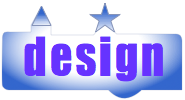 As Marc Andreessen once quipped, software is “eating the world,” embedding itself in all material and digital products. The basis of his remark was that digital interaction was an order of magnitude faster and more efficient than analog.
As Marc Andreessen once quipped, software is “eating the world,” embedding itself in all material and digital products. The basis of his remark was that digital interaction was an order of magnitude faster and more efficient than analog.
Design will eat user documentation explains that now a much more profound change is afoot because design is permeating everything that humans make. People are more likely to use things that have been explicitly designed for them because products’ ease of use and relevance are greater.
Why Design is Eating the World
 Having practiced service design and user research since 2006, I appreciate that most users care less about product/service (hereafter “product”) features or technology than about how easy and effective the product is in helping them do what they want to do (Clayton Christiansen says that people hire products to do jobs). And their purchase decisions are largely based on their experiences while using the product. They use the product in the way that makes most sense to them.
Having practiced service design and user research since 2006, I appreciate that most users care less about product/service (hereafter “product”) features or technology than about how easy and effective the product is in helping them do what they want to do (Clayton Christiansen says that people hire products to do jobs). And their purchase decisions are largely based on their experiences while using the product. They use the product in the way that makes most sense to them.
Specialists and experts universally complain that their patients/customers/clients judge their “quality” on their own experiences, not technical competency. This is the gist of the matter; customers do not have the technical training to “judge” the intrinsic quality of the product/service—but they do have the authority to judge their experience of using the product.
I use design methods and tools because they are most likely to lead to satisfied users. Design starts by understanding user experience and outcomes, and it uses this understanding to design a product. Design practices, when integrated with product engineering, make a best-in-class combination.
User documentation is overdue for a redesign because it is notoriously poor at helping users, and it has direct impact on customer experience. Its instructions, guides, videos, tutorials, instructions, etc. aim to help users use—and get value from—products.
In most organizations, user documentation has low status and is treated as an afterthought. Engineers or related internal staff like technical writers design and write user documentation in the late stages of the product design cycle.
Technical writing good practice is interviewing “subject matter experts” to learn the product, followed by some kind of user research. The latter is often grounded in asking about functions, features, and processes, and it rarely includes users’ emotions; it is product-centric. Designers explicitly focus on users’ emotions and experiences in themselves. The product is involved in the experience and is seldom the focus of the experience.
Improving the Business Value of Technical Writing and UX Writing offers five ways to transform these practices.
Business Impact
 The engineering–design shift is remaking markets, and the firms that redesign user documentation will see significant increase in customer lifetime value as well as lower return and service costs—and fewer rancorous complaints on social media. This will hit profitability significantly.
The engineering–design shift is remaking markets, and the firms that redesign user documentation will see significant increase in customer lifetime value as well as lower return and service costs—and fewer rancorous complaints on social media. This will hit profitability significantly.
Here’s one example. The foundation of Apple’s new approach after Steve Jobs’ return was leading with design. Apple focused on the “iLife experience,” not product features, and it came to own the laptop, computer, and smartphone markets worldwide (not in gross units, but in the most profitable units). For more on this, see The Rise of Design and Fall of Nokia, RIM and Motorola.
Another way to look at it is that most users don’t use most of smartphones’ features (in 2012, they used 5%), so most features are extra baggage to these users, who are often the majority of all users.

Leave a Reply
You must be logged in to post a comment.